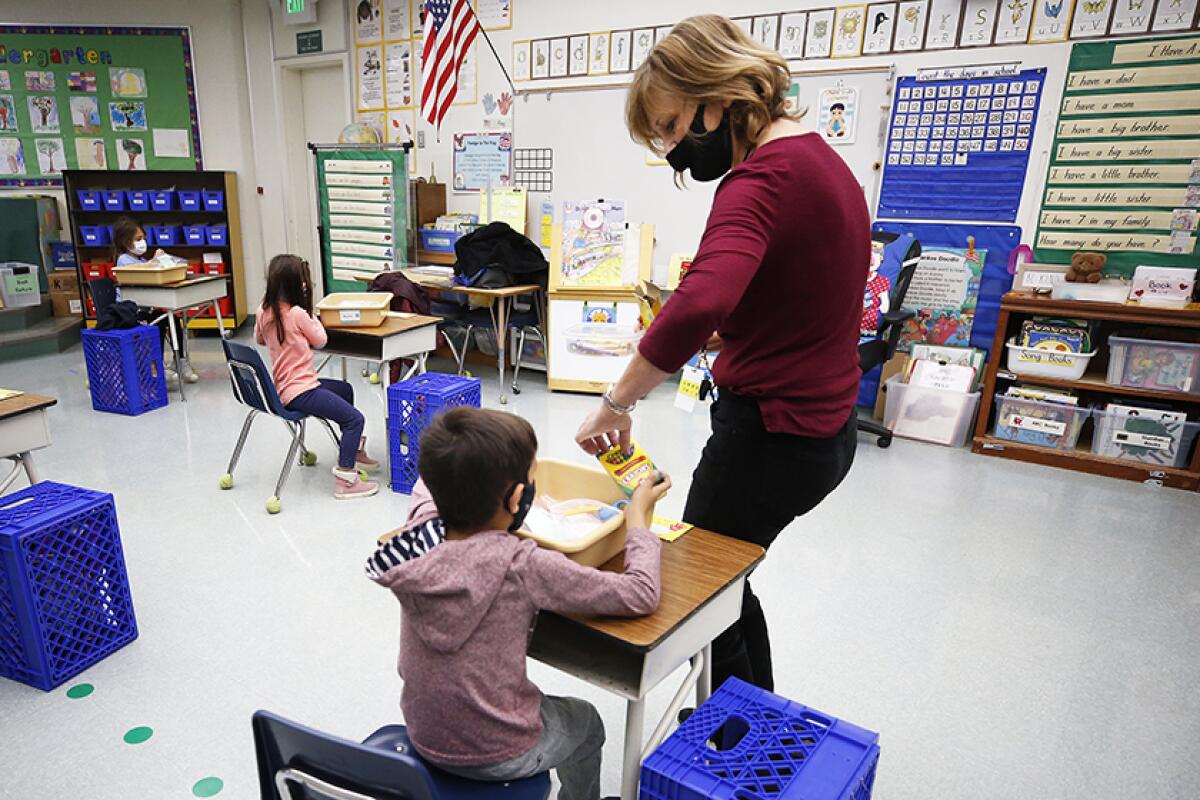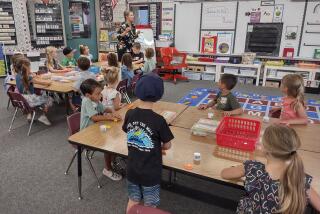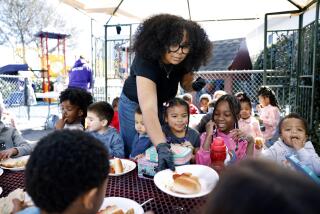Kindergarten declines fuel steep drop in public school enrollment amid pandemic

- Share via
The pandemic has intensified a multiyear trend of dwindling public school student enrollment statewide, causing a steep drop this year with more than a third of the decline stemming from 61,000 no-show kindergarteners.
Statewide, net enrollment in K-12 publicly funded schools in California fell by almost 3%, or 160,000 students in 2020-21, the largest drop in 20 years, according to annual data released Thursday by the California Department of Education. The drop takes into account an increase of 22,542 students attending charter schools, which enroll about one in nine students in California.
The falling numbers were spread across the state, with the four largest districts accounting for about a sixth of the decline in enrollment. Los Angeles Unified enrollment fell by 20,841 (4.76%), Long Beach by 2,003 (2.8%), San Diego by 4,270 (4.2%) and Fresno by 909 (1.3%). In the Bay Area, Santa Clara and San Mateo counties both lost more than 3% and Marin fell by 4.7%.
There are some big variations among the state’s 2,291 districts and charter schools. Excluding county offices of education, 83% of traditional districts saw a decline in overall enrollment, compared with only 48% of charter schools.
Most growth occurred outside of urban areas. Kern Union High School District, the state’s largest high school district with 41,854 students, grew 3%. Other districts where enrollment increased include Placer Union High School District, outside of Sacramento; Grossmont Union High School District in San Diego County; and Dublin Unified in Alameda County.
When it comes to kindergarten, however, the declines were more universal, a shift many experts expected. Across the state, more than four out of five districts with kindergartners saw a decline in kindergarten enrollment and nearly 60% of charters that offer kindergarten also saw a decrease in kindergartners.
Confronted with the struggles of remote learning, including requiring a 5-year-old to sit still in front of a computer for hours daily, some kindergarten parents kept their children in preschool. Some parents also opted to send children to private schools, many of which resumed in-person instruction far more quickly.
Causes for the slide in enrollment are myriad, complicated by existing trends, including declining birthrates and residents moving out of and around the state, and disruption wrought by the pandemic.
“There’s not one single answer why. This is very complex because every family has their own circumstances,” said Stephanie Gregson, California’s chief deputy superintendent of public instruction.
About 20,000 students filed private school affidavits in 2020, bringing the total annual enrollment to about 517,000 students. The majority of these pupils shifted to homeschooling, state data show.
The loss of the kindergarten experience will reverberate for some students even as educators consider how to make up for the lost time. Also, enrollment may bounce back if kindergartners return as first graders, as districts anticipate they will.
“California has among the largest achievement gaps in the country, and we know from research that those gaps are present before children arrive at school, so it is especially worrisome that so many kids missed out on kindergarten this year,” said Samantha Tran, senior managing director of education policy at Children Now, an advocacy organization.
The state’s overall kindergarten figures include children in transitional kindergarten, a bridge between preschool and kindergarten for those born between Sept. 2 and Dec. 2. While these pupils will simply move up to kindergarten in the fall, traditional kindergartners will be expected to go to first grade, where experts say they may struggle. This issue is heightened by the fact that first grade is more academically rigorous now than in years past.
Early childhood advocates have been calling for policies to support children who missed out on kindergarten due to the pandemic, especially since kindergarten is not mandatory in California.
State leaders are hoping to help school districts reach out to families who became disengaged with schooling during the tumult of the public health crisis.
“In a year that has been so challenging for educators, students and families, it is concerning to see this decrease, especially those in our youngest grades,” said Tony Thurmond, state superintendent of public instruction. “While there are many reasons to stay optimistic that enrollment will rebound as conditions improve allowing more schools to safely return to in-person instruction, we also must help schools identify opportunities to engage with families who either sought new options for their students during the pandemic, or need additional resources and support to connect with school and succeed.”
D’Souza, Fensterwald and Willis report for EdSource, a nonprofit journalism website covering education issues in California.
More to Read
Sign up for Essential California
The most important California stories and recommendations in your inbox every morning.
You may occasionally receive promotional content from the Los Angeles Times.










